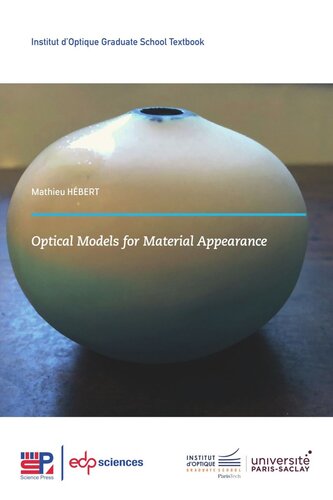

Most ebook files are in PDF format, so you can easily read them using various software such as Foxit Reader or directly on the Google Chrome browser.
Some ebook files are released by publishers in other formats such as .awz, .mobi, .epub, .fb2, etc. You may need to install specific software to read these formats on mobile/PC, such as Calibre.
Please read the tutorial at this link: https://ebookbell.com/faq
We offer FREE conversion to the popular formats you request; however, this may take some time. Therefore, right after payment, please email us, and we will try to provide the service as quickly as possible.
For some exceptional file formats or broken links (if any), please refrain from opening any disputes. Instead, email us first, and we will try to assist within a maximum of 6 hours.
EbookBell Team

4.7
56 reviewsMaterial appearance has emerged as a scientific topic in its own right rather recently and an increasing number of professionals concerned by this topic, belonging to various application areas, are entering this vast field. Thanks to the rise of imaging systems and visual rendering software, and the rapid development of accessible devices for color and gloss analysis, non-expert people can now check, for example, the compliance of a product with an appearance standard, or create a realistic virtual prototype. Most of these tools are based on optical concepts which are generally not in the forefront at an elementary level usage, but which are necessary for a consistent analysis of the specific cases studied. The objective of this book is precisely to introduce the fundamental notions of optics allowing the readers to understand the radiometric quantities measured with common devices, to learn how to analyze them, and to review some classical optics-based predictive models for various types of materials and structures. We have chosen to illustrate the theoretical notions with numerous examples and corrected exercises, easily transposable to a variety of materials: glass plates, polymer films, pigment layers, metals, papers and printed surfaces, coatings, etc. The book targets an audience of students, engineers and researchers who have a scientific background but not necessarily versed in optics, who are seeking sound bases in order to characterize the appearance of products and better comprehend the more advanced research currently being conducted in this area.